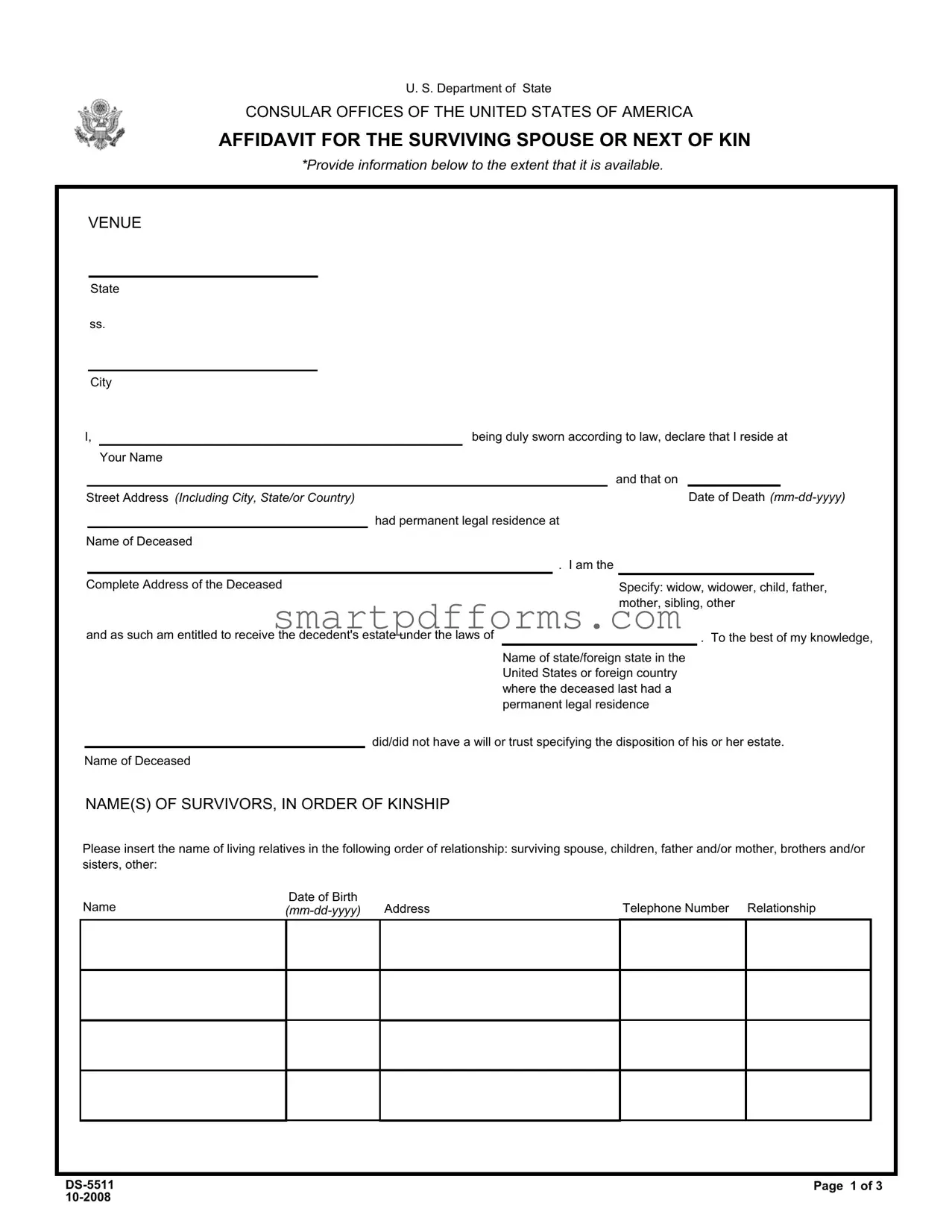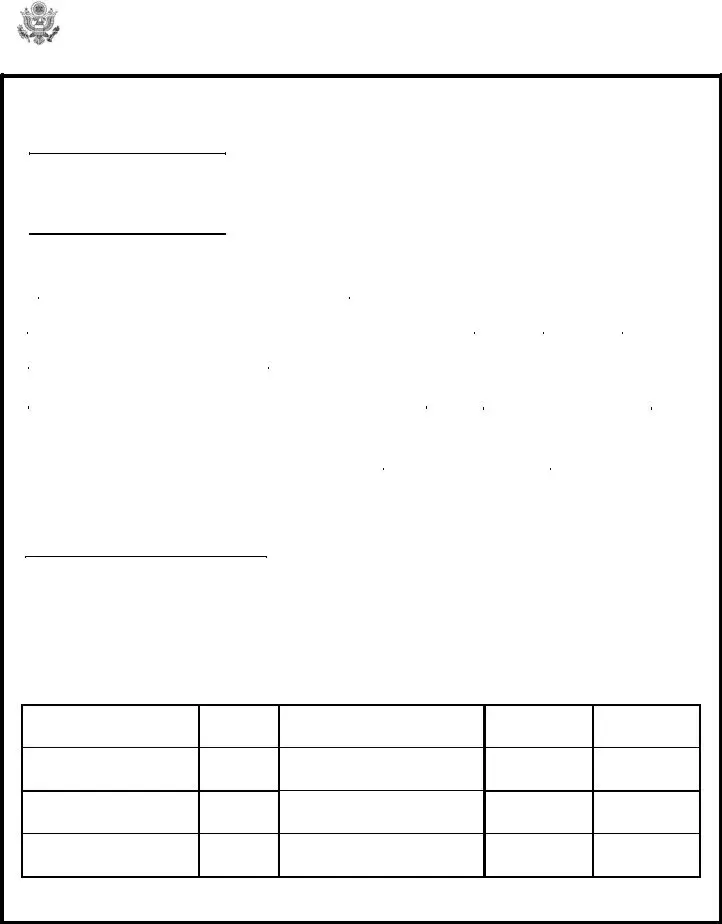Blank Next Of Kin PDF Template
The Next of Kin form, provided by the U.S. Department of State for use in consular offices, serves as a crucial affidavit for individuals claiming to be the surviving spouse or next of kin. This form facilitates the lawful entitlement to a decedent's estate, delineating necessary details about the affiant's relationship to the deceased, their permanent legal residences, and other pertinent information regarding survivors in order of kinship. For Americans dealing with the loss of a loved one abroad, completing this documentation is a vital step in managing the deceased's estate in accordance with 22 U.S.C. 2715c and ensuring that personal effects are rightfully distributed.
Ensure peace of mind and legal clarity by filling out the Next of Kin form. Click the button below to initiate the process.



